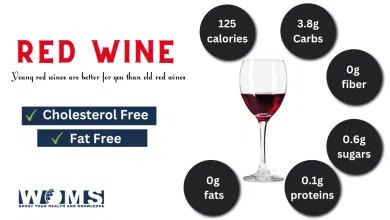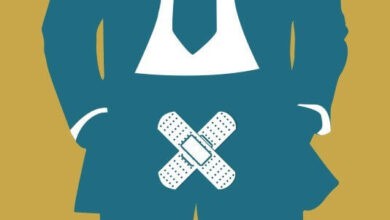A Reusable Face Mask

When you go out, having a reusable face mask on hand is vital. However, the longer the pandemic lasts, the more you should think about investing in a long-term mask. At the onset of the pandemic, when masks were considered crucial in the fight against the Covid-19 pandemic, most people would use cloth as masks, but with time these masks have been considered ineffective.
Medical masks have been considered effective. N95 masks were considered the most appropriate for consumer use. However, there was a shortage of masks due to the need for frontline workers to be regularly supplied.
Therefore, there was a need for protective masks, that would be in constant supply and that were considered affordable. Indeed obtaining masks that can be used daily has been necessary; masks that are comfortable, stylish, and economical.
What is a Reusable Face Mask?
A good mask should also protect from dust and air particles and can be rewashed and worn again. Reusable face masks are not the same as disposable face masks used by medical practitioners. They can be in reuse and rewash without possible damage.
Moreover, they are also more comfortable to have on as one goes by their day-to-day errands. Yet, they have to be made in such a way that they seal correctly to protect the wearer and those around them from respiratory droplets, germs, and bacteria in the atmosphere.
So Why Is The Term Reusable?
Reusable means that you can wear it again and again and still function to protect the wearer. They can be washed and worn again till the wearer needs to dispose of them to avoid self-contamination. So what should you look for when using a reusable face mask? A good example is the reusable face masks from 72 hours.
They are comfortable to wear, eco-friendly, and convenient to carry. Furthermore, they are 100% cotton, have a soft feel, and have layers that reduce exposure to pathogens in the air.
They are not for medical use and should not be in use in places of harmful powder and gas. Reusing means getting to touch the mask again, yet it could have the pathogens. Extended use is advisable than reuse.
When reuse is the option, rather than disposing of, store the mask in a place with sufficient airflow for three days between uses. For cloth masks, you have to wash them after wearing them, and there is a recommendation that damp masks be at your disposal.
Medical and non-medical masks can be in reuse. However, precautions should be there after wearing to ensure the disinfection of pathogens. The mask’s efficacy depends on its structure, i.e., the fabric and layering for efficient filtration. Discomfort discourages most people from wearing masks for long periods yet they are essential. Comfort is the key.
What Is A Good Mask?
The following are points as to what makes an efficient mask, click here to find a good mask to protect yourself:
- A good mask should be well-fitting. It should completely cover your nose and mouth.
- A good mask should be in layers to obstruct particles in the atmosphere. 3-5 layers are sufficient.
- Should have an inside filter or vacuum
- It should have a pocket to place the filter.
- The fabric should be tightly weaved.
You can upgrade a medical mask to make it more comfortable or make your mask at home. The materials that make good masks are silk, nylon, and vacuum cleaner filters or a combination of fabric; however, 100% cotton is the most effective as the fabric weave is less porous than these other materials. It should have multiple layers but should not be overbearing.
What Kinds Of Face Masks Are The Most Effective?
Below are the lists of some effective face masks:
Surgical mask
Surgical masks come in a variety of styles. These single-use, disposable masks are usually cut into a rectangle with pleats that stretch to cover your nose, mouth, and jawline. They are of breathable synthetic fabric.
Surgical face masks, unlike respirators, do not fulfill NIOSH filtration criteria. They don’t have to establish an airtight seal against the part of your face they’re covering.
Surgical masks’ ability to filter infections varies greatly, with reports ranging from 10% to 90%.
Randomized research demonstrated that surgical face masks and N95 respirators lowered participants to risk of several respiratory infections in identical ways, despite disparities in fit and filtering capacity.
The type of medical-grade mask or respirator worn by study participants had less of an impact than adherence — or proper and consistent use. Other research has now corroborated similar findings.
Respirators
Tangled fibers in fit- and seal-tested respirators are particularly effective at filtering microorganisms in the air. The National Institute for Occupational Safety and Health has set stringent filtration standards for these respirators (NIOSH).
The coronavirus is predicted to have a diameter of 125 nanometers (nm). Keeping this in mind, it’s useful to be aware of the following:
- N100 respirators are capable of filtering 99.7% of these particles.
- N95 respirators are certified to filter 95% of particles with a size of 100 to 300 nanometers.
- The N99 respirators can filter out 99 percent of harmful particles.
Exhaled air escapes through valves on some of these respirators, making it easier for the user to breathe. However, this has the disadvantage of exposing other persons to the particles and germs that are going out while breathing out through these valves.
Workers in frontline healthcare and other occupations who must wear these masks undergo an examination at least once a year to ensure adequate respirator size and fit. Checking for air leaks with specific test particles is also part of this process. These frequent checks ensure that hazardous particles and germs do not enter the system.
Masks made of cloth
Because most DIY fabric masks contain gaps near the nose, cheeks, and mouth where tiny droplets might easily come into contact, they are less effective at shielding the wearer. Furthermore, the cloth is frequently permeable and unable to keep out even the tiniest drips.
Although cotton masks are less effective than their medical-grade equivalents, experimental results show that when worn and made properly, they are significantly better than no mask at all.
Living During the New Normal
Indeed, the pandemic has brought a lot of realizations and learnings to mankind. With the restrictions in travel, socialization, and other public events, many people appreciate the freedom and life they had in the past. COVID vaccines bring new hope to many people around the world.
Because of the pandemic, many people have lost their jobs and loved ones. The morbidity and mortality rates associated with COVID continuously impact the economy. For this reason, people need to keep up with the new normal to survive financially and health-wise.
The following are some helpful tips to live during the new normal:
- Wear Face Mask Appropriately: There are many types of face coverings available in the market today, including black disposable face masks. Regardless of the material, color, and brand of face mask people wear, it’s important to wear them properly to ensure protection against viruses and other air pollutants that can harm their health.
- Follow Health And Safety Protocols: While health and safety protocols may seem freedom-restrictive, they’re one way to avoid the spread of the disease. Everyone must comply with government laws and ordinances to fight the pandemic.
- Proper Disposal of Masks: As the pandemic surged, many disposable masks aren’t being in a proper disposal. They’ve been turning up in different cities worldwide.
Summary
Face coverings, including disposable and reusable face masks, play a vital role in keeping everyone safe during the pandemic. Reusable face masks help save money and the environment at the same time.
Disposable face masks, such as surgical and N95 face masks are in a recommendation to be in use in hospitals and other healthcare settings. Knowing the features and benefits of face coverings can help people safeguard themselves from the risk of contracting and transmitting the COVID-19 virus and other diseases spread airborne and via droplet nuclei.
FAQs:
How to clean a reusable face mask?
They should be cleaned after each use. For cleaning the reusable face mask use detergent and soap and hot water. After washing properly with soap leave it to dry in the sun. The main need for cleaning the mask is soap as it helps to wear out the coat of the virus.
How many times I can use a reusable face mask?
If you wear it once and wash it after use then the reusable mask can last up to two months then after that it becomes less effective.
How to sanitize reusable face masks?
We can sanitize our face mask by soaking it in bleach solution which we can easily prepare in our home by adding 4 teaspoons of household bleach per quart of water for 5 minutes. Then we need to rinse the mask with water and leave it to dry.
Is reusable mask effective?
Yes, the reusable mask is effective if it contains three-layer in it. The three-layer protection in the reusable mask is important to make it effective.




